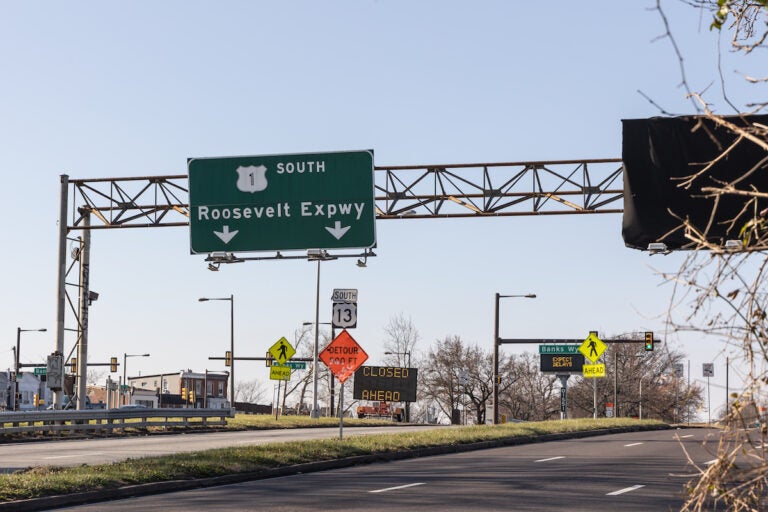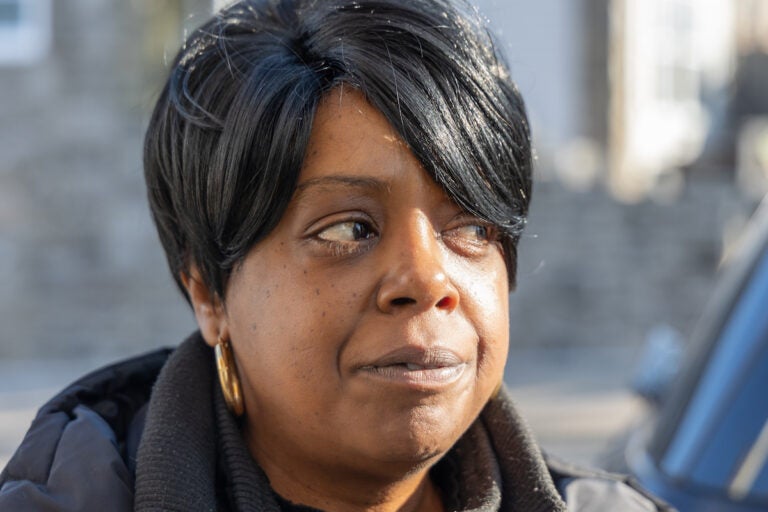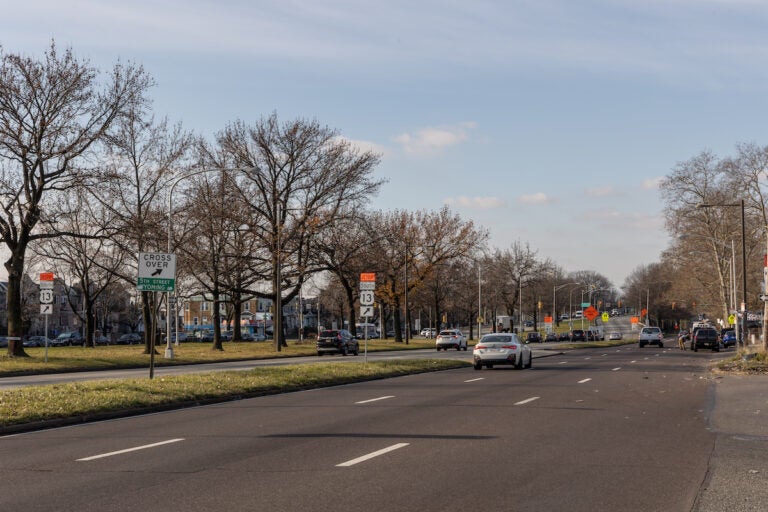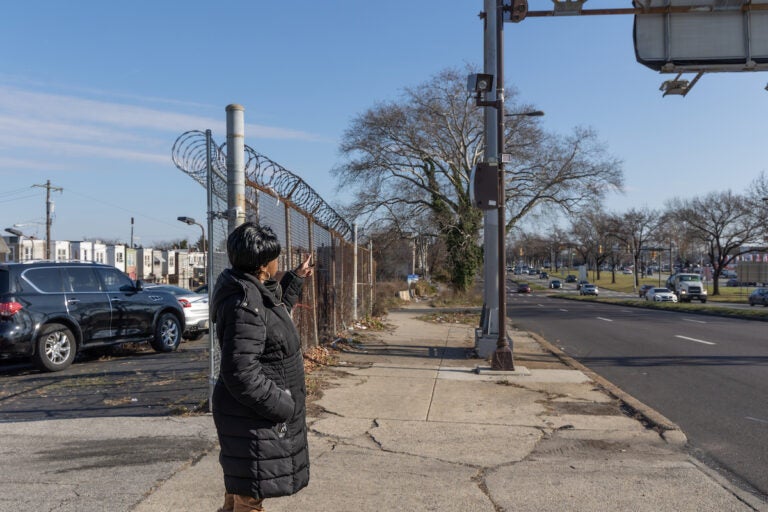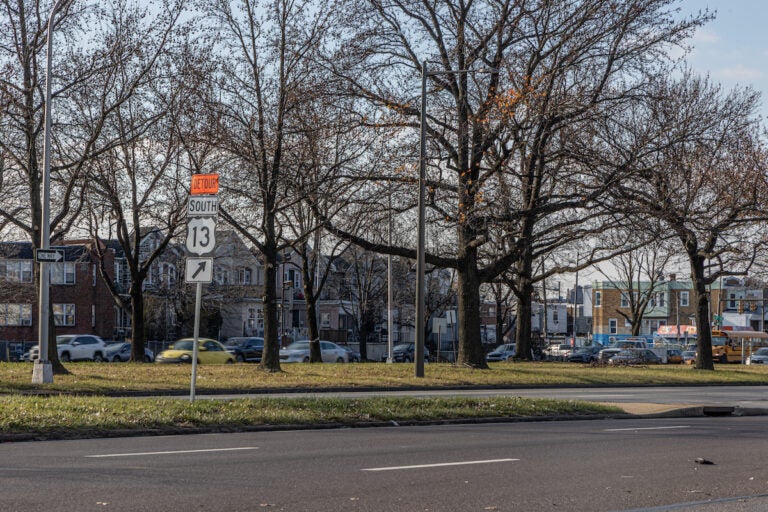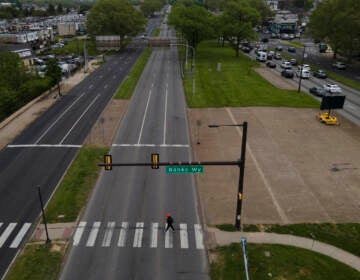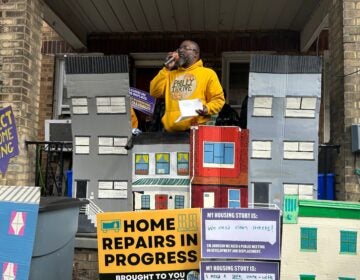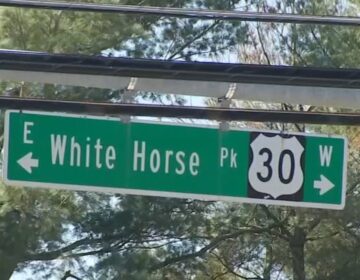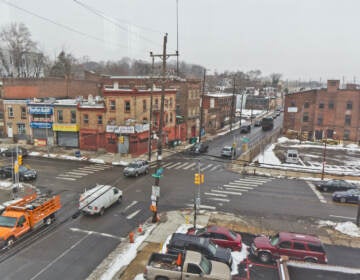‘This is definitely a crisis’: Will adding more speed cameras make Philly’s streets safer?
State lawmakers passed a bill last month that expands on a pilot program considered a big success. Opponents say drivers will be wrongly penalized.
Listen 4:38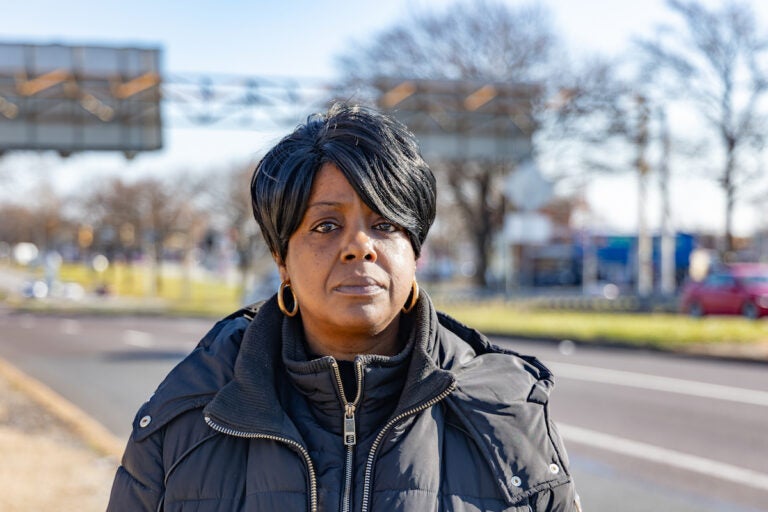
Latanya Byrd’s beloved niece and three of her children were struck and killed crossing Roosevelt Boulevard in Philadelphia in 2013. Byrd has been fighting for safer streets for all since then. (Kimberly Paynter/WHYY)
Have a question about Philly’s neighborhoods or the systems that shape them? PlanPhilly reporters want to hear from you! Ask us a question or send us a story idea you think we should cover.
For Latanya Byrd, driving on Roosevelt Boulevard is a necessary evil.
Each weekday, she has to navigate the dangerous 12-lane road to get to her job at Orleans Technical College near the Northeast Philadelphia Airport. Alternative routes simply take too long.
The boulevard is also a source of deep pain for Byrd. A decade ago, a drag racer struck and killed her niece, 27-year-old Samara Banks, and three of Banks’ four sons while they were crossing the road around 2nd Street.
Her sons were 4 years old, 23 months old, and 7 months old.
“That was just totally devastating,” said Byrd. “There were two generations of our family that we lost in one snap of a finger and I just kept feeling like there was something I needed to do.”
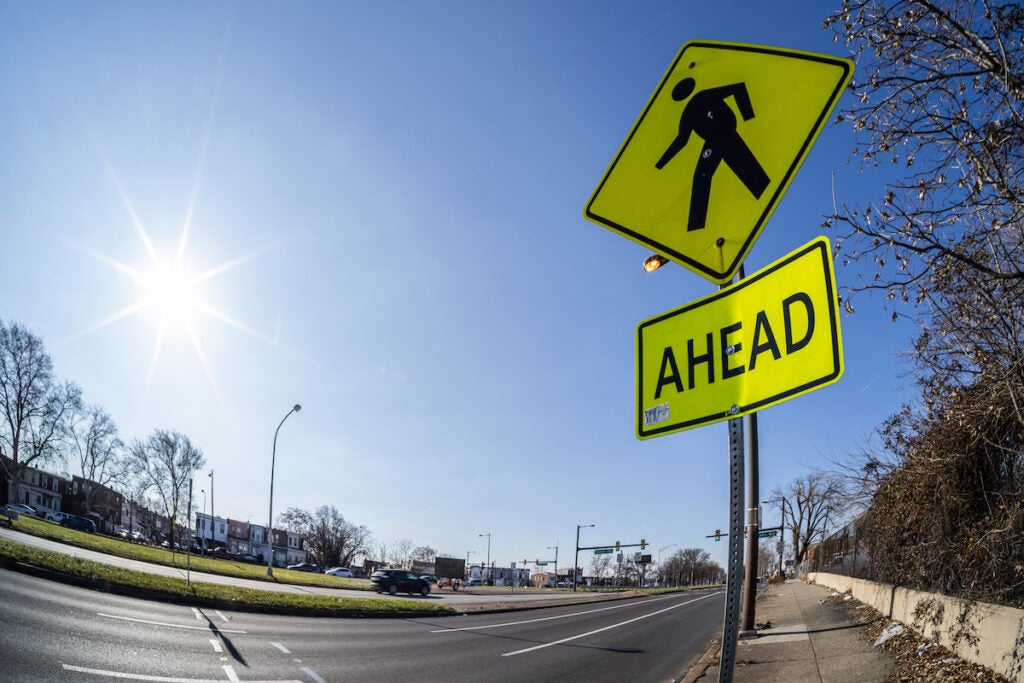
In her grief, she turned to traffic safety advocacy, first joining a successful push to get automated speed cameras on the boulevard, then another to expand the program to other corridors around the city.
Legislation signed into law last month authorizes adding five new corridors and five new school zones to Philly’s speed camera program. It also makes permanent a pilot program launched on the boulevard.
Byrd, who co-founded a local chapter of Families for Safe Streets, couldn’t be happier.
“The cameras are a big part of the solution,” said Byrd. “I don’t know exactly whose lives we have saved, but I do know that those crashes have been reduced since those cameras went up.”
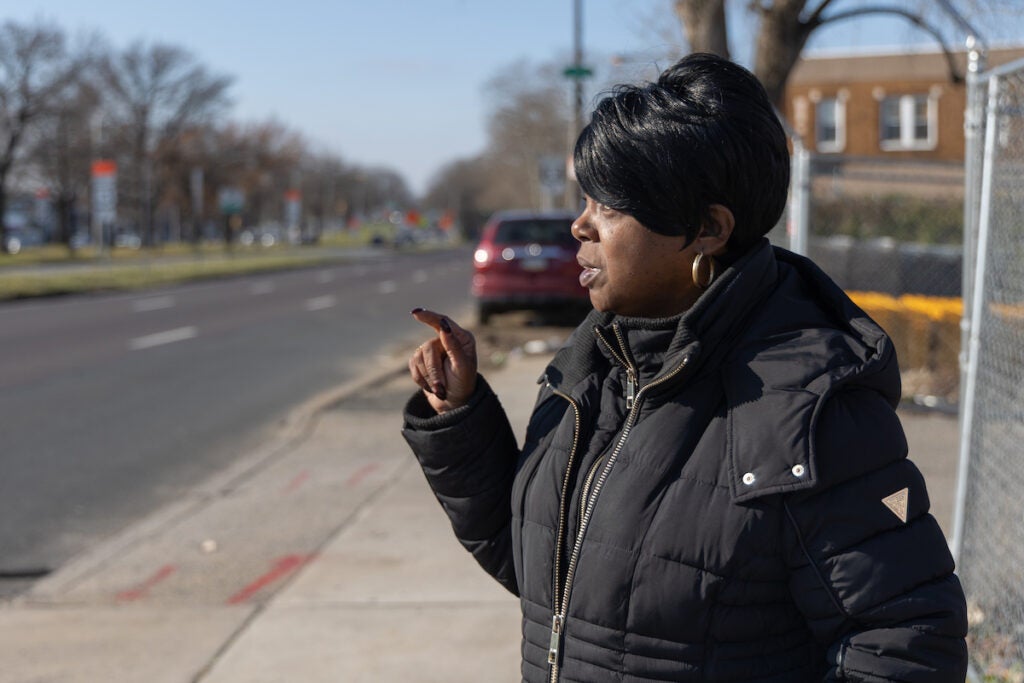
Eager to expand
The expansion comes as Philadelphia continues to experience what advocates consider a traffic safety crisis.
City-held data shows that at least 40 people died in hit-and-runs in 2023, the majority of them pedestrians. That’s more than double the total recorded in 2019.
The city’s traffic death rate outpaces other big cities in the country, including New York and Chicago.
“We are not the only city that saw a spike in traffic fatalities in 2020, but we have had a harder time reducing that number compared to other cities,” said Nicole Brunet, policy director for the Bicycle Coalition of Greater Philadelphia, adding that increased speeding and reckless driving are the main culprits for the sustained uptick.
In the coming months, the city will work with PennDOT to select new corridors for the speed camera program, considered a critical part of Philadelphia’s broader strategy for making roads safer for drivers and pedestrians.
The locations will be picked based on speed data and speed-related crashes involving vehicles or pedestrians, according to the legislation. Separate engineering and traffic investigations will also be conducted for each of the proposed roadways.
The public will have an opportunity to weigh in on the choices before they are finalized. And City Council must pass a bill for each corridor before the cameras can be installed.
Once they’re up, there will be a grace period during which drivers will be issued a written warning instead of a violation. A driver must be traveling at least 11 miles per hour over the posted speed limit to receive a violation, which can run $100 on corridors and up to $150 in school zones.
Possible locations for the expanded program include Henry Avenue, North Broad Street, Cobbs Creek Parkway, and Kelly Drive.
“We’re definitely eager to get these out as soon as possible because the longer they’re not there, that’s lives that are not being saved,” said Marco Gorini, who manages Vision Zero, a program launched by the Kenney administration to eliminate all traffic-related deaths and severe injuries in Philadelphia.
Traffic safety advocates and experts say they’re confident the new automated speed cameras will save lives, largely as a result of the pilot on Roosevelt Boulevard.
Since 2020, the year cameras started going up, speeding has been down 95% at those intersections, according to PennDOT. The cameras, managed by the Philadelphia Parking Authority, are also credited with saving 36 lives during that span.
And it appears the cameras are deterring would-be speeders. From June 2020 to November 2022, violations dropped nearly 90%, according to the most recent annual report on the program.
There are now cameras at 10 intersections along a four-mile stretch of the boulevard between Banks Way — a crosswalk added after the fatal crash that killed Banks and her children — and Pratt Street.
“The automated speed enforcement on the speed cameras on Roosevelt Boulevard have been a huge success of our Vision Zero program and the Kenney administration,” said Gorini.
Advocates and experts don’t view automated speed cameras as a panacea for Philly’s traffic safety epidemic, but they do consider them among the more effective ways of deterring drivers from speeding.
Not everyone agrees.
Outliers only
Opponents argue it’s punitive, and in some cases regressive, to install automated speed cameras, in part because they believe doing so can create profit-driven “speed traps” that arbitrarily increase the cost of driving.
“We’re not in favor of ticketing in general as a means of improving traffic safety for the vast majority of people. We are in favor of ticketing people who are the outliers — that person that’s going way faster than everyone else,” said Jay Beeber, executive director for policy for the National Motorist Association, a member-based organization “dedicated to protecting the rights of the motoring public,” according to the group’s website.
The NMA argues there are more equitable ways to deter drivers from speeding, including flashing beacon signs and speed feedback signs, which alert drivers to the speed limit and how their speed compares, respectively.
Unlike automated speeding tickets, which arrive in the mail weeks later, these “engineering solutions” send a direct message to drivers in real time about their behavior, making it more likely it will change, said Beeber.
He points to a 2006 study out of Minnesota, which found that speed feedback signs reduced overall speeds by approximately six to eight miles per hour at so-called transition points, locations where the speed limit shifts from a higher to a lower speed.
Beeber also highlighted a 2017 analysis of an automated speed camera program in San Jose, California, conducted while he was leading Safer Streets L.A. The study found that speed-related collisions declined after the cameras were removed, and that about the same number of pedestrians were killed.
“Certainly there are outliers that you would consider scofflaws that don’t really care about safety. They don’t care about anybody else. But that’s not the vast majority of people who are on the road,” Beeber said.
“If your goal is actually reducing speeds and not generating income, then do everything you can within reason engineering-wise to reduce speeds,” added Beeber.
Some of the revenue generated by the automated speed cameras in Philadelphia will go to the parking authority for operating expenses, including the manpower needed to review the footage before citations are issued. But the majority will go back to PennDOT. The agency then redistributes the funding to municipalities in the form of traffic safety grants. Priority is given to the municipality in which the cameras are located.
PPA executive director Rich Lazer said the city has received about $50 million through that program through the boulevard cameras. Some of that money has gone to cover the cost of leasing cameras and storing the footage.
Between June 2020 and February 2023, the last month for which data is available, the PPA issued more than 1.2 million speed camera violations to people driving on the boulevard.
“The goal is to cut the tickets down because when there’s less tickets that means people are following the speed limits and the behavior is changing. And that’s what we want to see. I would love it if we didn’t issue any tickets on speed cameras,” said Lazer.
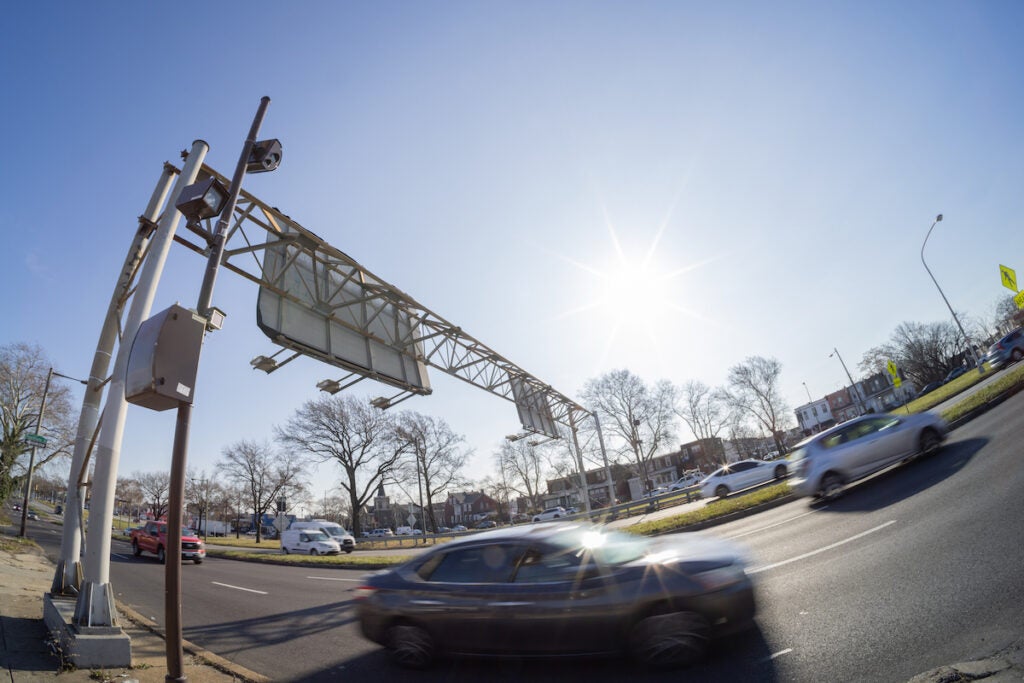
Gorini agreed, saying the priority is safety, not revenue.
“It’s all really designed in a way that no funding goes into either the city’s or state’s general funds. It’s really earmarked specifically for improving safety,” said Gorini.
It could be a year or more before the first cameras are installed.

Subscribe to PlanPhilly
WHYY is your source for fact-based, in-depth journalism and information. As a nonprofit organization, we rely on financial support from readers like you. Please give today.



